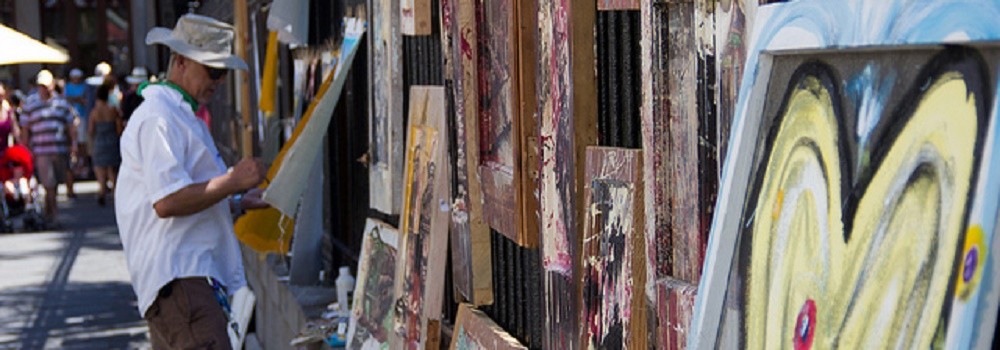The Strategy of a Well-Fed Artist
“I think it helps. [Art representatives] are great because they believe in what you do. It helps you move on and be creative.”
[pullquote]Art representatives can serve as a critical line of support, helping artists to manage the business aspect of their career while focusing on the creative.[/pullquote]
Shukla notes that art representatives can serve as a critical line of support, helping artists to manage the business aspect of their career while focusing on the creative.
“I can’t do everything. I tried to do everything, and I can’t,” he says. “And if I come close to doing it, then not one of those things are really any good.” Bamberger writes that for an artist who is struggling to get noticed, support is necessary. He notes that although expensive upfront, a consultant’s fee is small compared to years of art school, and can be very useful.
“An experienced art consultant or business professional can show you how to present your art effectively, maximize your chances for results, minimize problems, and enter into mutually beneficial business relationships,” Bamberger explains. Doyle says that once she decided to start marketing her work, the internet was a great help in connecting with potential buyers and galleries. “The marketing capability [online] is huge. I don’t know what people did without the internet. I have no idea,” she says. “You would have been really restricted to your local clientele.”
Using social media and marketing techniques such as giveaways and contests can also be a great way to get your artwork noticed.
“You reach so many people without having to get out there too much,” Doyle says. “ I put out a few contests, a few giveaways to start attracting more and more people. And then a few art galleries noticed my Facebook page, and I had galleries contacting me for shows. It really happened overnight.”
Doyle also says that art-centric websites like Great Big Canvas and art.com can be helpful in getting artwork in front of a larger audience, although they take a cut of sales.
Rea likewise notes that social media can allow an artist to reach out and connect while retaining their independence. “Social media […] allows artists to own their platform, to expand their platform and connect with fans.”
But, she cautions, “You have to get fans first. You have to know what you’re going to say to them, to engage them in conversation. Social media is just one marketing strategy; it does not make for a marketing plan and a business plan.” In the end, Rea says, the art community needs to start treating individual artists as business people and entrepreneurs. Artists should be educating themselves on how to run a small business and creating business plans, she says. “We need to change the conversation. Artists do not have a career. They have a business.”
“The bottom line is very simple,” she says. “If you have creative talent, if you have something to say to the world, you have to make art. You have to. But if you want to be heard, you have to sell art. And that part of the equation is completely missing. “
Sarah Hartwick is a freelance writer and an avid traveler. In her spare time, she works with Schools Building Schools, a growing NGO that’s striving to spread access to education throughout Sub-Saharan Africa. Check out her blog to follow her adventures around the globe.
Image Courtesy of Adam Jones, via Flickr.































Share the post "The Strategy of a Well-Fed Artist"